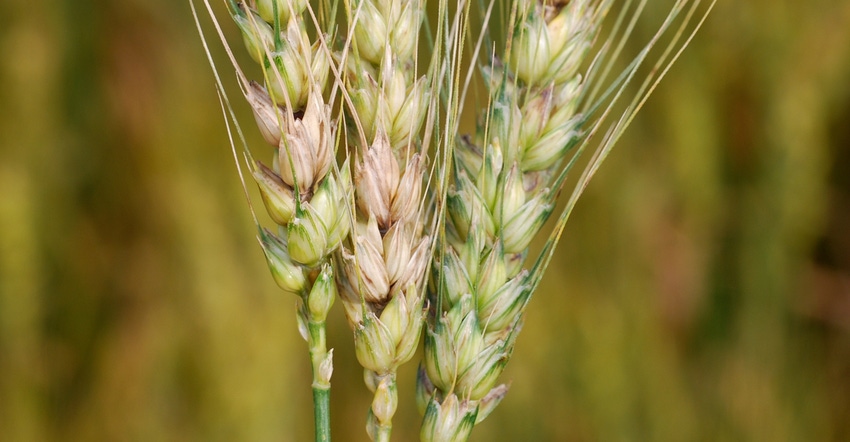
Fusarium head blight presents a real challenge in a few different ways. Farmers could lose up to 50% of their wheat yield from the lightweight, bleached “skeleton” kernels, says Nathan Kleczewski, University of Illinois plant pathologist. FHB-infected kernels can lead to vomitoxin, or DON (deoxynivalenol), which causes illness in humans and livestock if ingested. At the mill, grain that exceeds acceptable levels of DON is mixed with cleaner wheat purchased from other parts of the U.S., Canada or other countries to “blend out” the vomitoxin.
“That costs money,” Kleczewski says, adding that the extra cost is passed along to farmers through dockages and lower prices.
How can farmers avoid the FHB and vomitoxin mess? “It’s really something you want to come in and be proactive about,” Kleczewski says. “You have to use all the tools in your tool belt.” Here are Kleczewski’s top four integrated management recommendations against FHB:
1. Do your homework on resistant varieties. Use ScabSmart to look up varieties with the best FHB resistance ratings. “Right off the top, without thinking about a fungicide, you can reduce the potential for head scab or vomitoxin by roughly 45% by choosing a moderately resistant variety over a susceptible variety,” Kleczewski says.
2. Plant wheat after soybeans, not corn. Gibberella ear rot and gibberella stalk rot are caused by the same fungus as fusarium head blight, Gibberella zeae. The FHB pathogen will grow and spread on corn residue, increasing the potential for spore production in the field. The FHB pathogen grows much less effectively on soybean residue, which reduces potential infections.
3. Minimize residue before wheat. Diseases like FHB thrive in corn residue. “The more residue you have, the more likely you are to have enhanced or elevated disease in the wheat crop if you plant into it,” Kleczewski says. Tillage or sizing residue to promote decomposition reduces the amount of material available for the FHB pathogen to grow on.
4. If conditions favor FHB, use the right fungicide. Fungicides can’t cure FHB, but Prosaro, Caramba or Proline can suppress head scab and, ultimately, vomitoxin when the crop is at risk during early flowering. For the most effective FHB application, target early flowering, or when about 50% of the main tillers have started to flower, until roughly six days after this stage. Use the FHB Risk Tool to determine whether your wheat crop is at risk and if a fungicide treatment would be beneficial.
“Take an integrated approach, and be proactive each year with head scab,” Kleczewski says. “Fungicide alone won’t be sufficient in terms of reducing scab or protecting yield.”
About the Author(s)
You May Also Like




